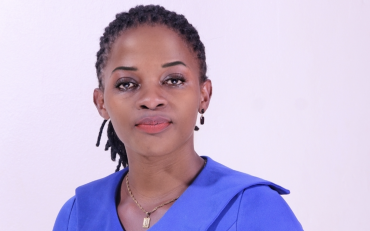First published in the Stories Worth Telling Newsletter
In this article, Betty Najjemba, the OPD Engagement Officer from Uganda, shares her experience as a deaf woman, the barriers she has faced within her community and offers some insights based on these experiences, on what society should do to support the meaningful inclusion of deaf people in communities.
I was not born deaf. In 1999, I woke up one day to find that I have lost my hearing completely. It was a very difficult moment to adjust to a completely new environment. Initially, I resorted to lip-reading as a mode of socializing which did not work out because I could barely read the lips of one percent of people I encountered. I never got a chance to learn sign language and my family also did not have any knowledge of the disability movement.
It was not until I completed high school in 2008 that I got to learn about the Uganda National Association of the Deaf (UNAD) and later the National Union of Persons with Disabilities of Uganda (NUDIPU). During my initial visits at UNAD, I was prompted to learn sign language to prepare myself for university studies and a future career. Before UNAD, I thought I was the only deaf person in the country perhaps across the globe. I did not even understand what the term ’deaf’ meant. To me, it seemed that maybe the staff members at UNAD were not really deaf persons, as I was already conditioned to believe the negative portrayal of deaf people in society as “useless” individuals. Interacting with deaf people at UNAD gave me a whole different impression of the deaf community.
I share my story to show how marginalized deaf people are in the community and how much work remains to be done to include them in our society. This means that our understanding of sign language and its role in the meaningful inclusion of deaf persons is still very rudimentary.
This is an attempt to clarify that the mere provision of a sign language interpreter is not enough to support effective and full participation. There is much more to it, for example:
- All sign languages are not the same. Most sign languages tend to differ across continents and even within the country. For instance, here in Uganda, some signs used in central Uganda can be different from those used in northern Uganda. Unless one is familiar with both regions, it will be difficult for a person from central Uganda to follow signs from northern Uganda, and vice-versa. The key is therefore to provide a sign language interpreter that the user follows and not assume that a locally provided sign language interpreter will always work. In many cases, a deaf person from Kampala visiting western Uganda for field work or conferences, may have to travel along with a sign language interpreter from Kampala.
- With reference to the above example, one should not assume that the sign language interpreter from Kampala can also speak the language of the local community. So, when the nature of the work demands that the deaf person interact with the local community, he/she should also be provided an interpreter who understands the local languages and can voice the local deaf people’s interventions.
- The quality of interpretation also depends on the training and exposure of the sign language interpreter. In case of technical and complex activities, especially in terms of explaining the CRPD or human rights issues, it is important for the sign language interpreter to have familiarity with such work. Otherwise, a lot of time is lost just to get the terminologies right and the chances of misrepresentation increases by manifold. Hence in such events, a deaf person may prefer booking an interpreter who is already knowledgeable and familiar with the issues under discussion.
- Sensory breaks are essential for the interpreter and the deaf person as otherwise it leads to fatigue. For meetings of an hour or more, it is essential that two sign language interpreters are provided so that they can switch every 20-30minutes.
- Advance preparation and sharing of documents and important information ahead of the event/activity is critical for the sign language interpreter and the deaf person. For example, one may need to go through the complex terminologies with the sign language interpreter as such because some words may not even have signs of their own, and finger spelling may be agreed on.
- Speaking audibly, clearly and at a regular pace is essential for the interpreter to be able to deliver because without that some words may go unnoticed and the deaf person may either miss the whole context or misunderstand what is being said.
- Too much content and technical jargons that requires complex signs or spelling out words may deter a deaf from internalizing parts of the discussions, especially if they are new to the concepts being discussed. So it is important to know the audience to simplify content when necessary
- It is important to check-in with the deaf participants from time to time if the delivery of the presentation is okay or if anything requires further clarification. There are instances where sign language interpreters are considered as a proxy and are asked to speak on behalf of the deaf person. Additionally, sometimes many things get lost in translation or are missed.
- Lastly factors like seating arrangements, lighting quality, not speaking over one another are some other concerns that need to be kept in mind.
I have highlighted some key aspects that need to be considered in the provision of sign language for the meaningful inclusion of deaf people in our activities.
